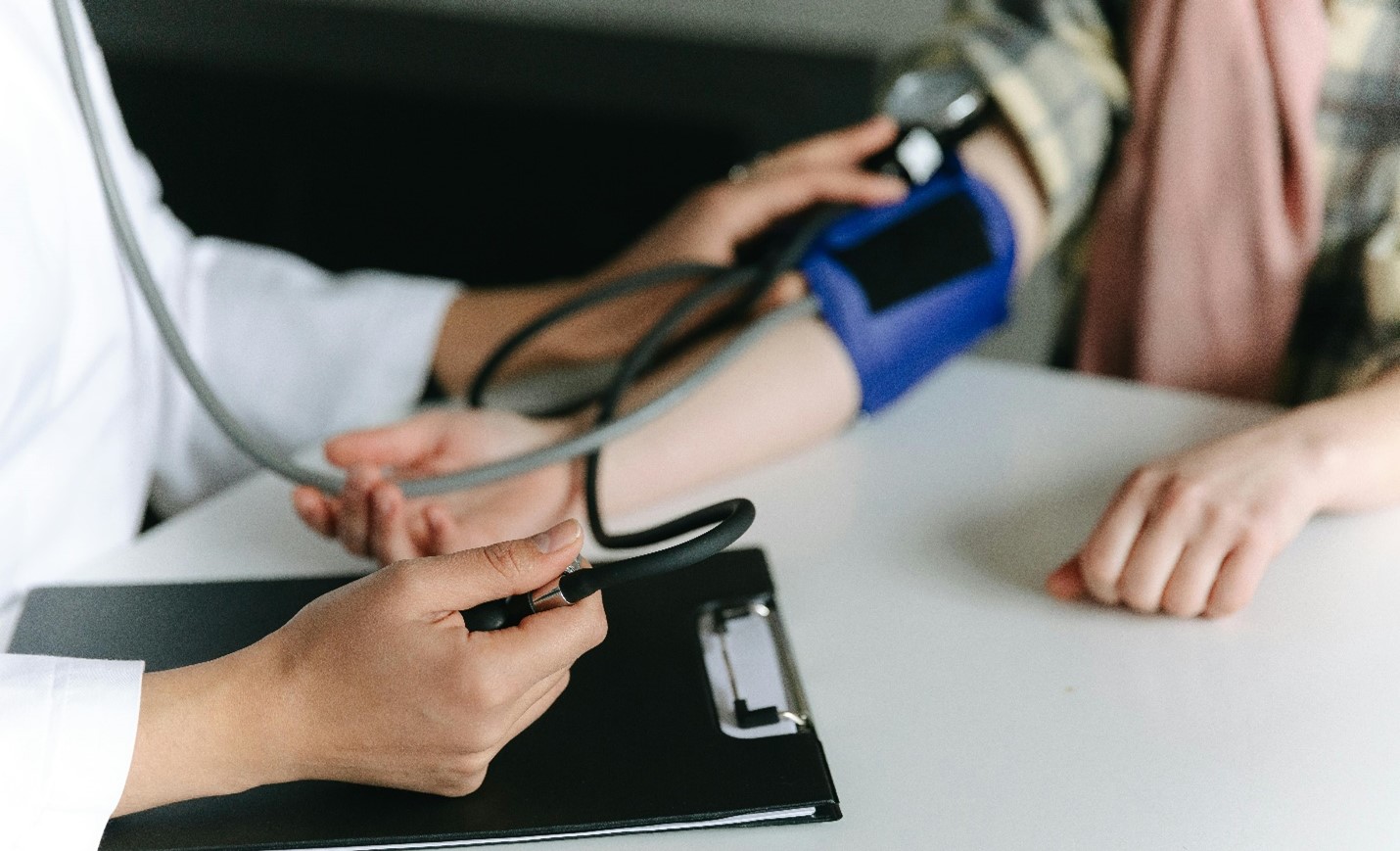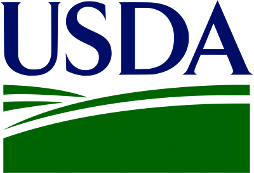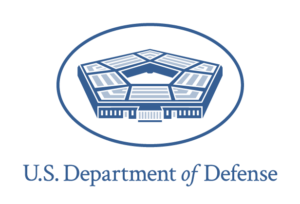Written by: Emmanuel Dubure, MPhil & Kristen DiFilippo, PhD, RDN
Hypertension or high blood pressure is a cardiovascular condition characterized by persistently elevated blood pressure (World Health Organization, 2023). Blood flows through vessels in the human body under pressure generated by the beating of the heart. When the heart contracts, blood is pumped out of the heart to all parts of the body under pressure which can be measured with a blood pressure monitor or sphygmomanometer. A blood pressure reading is made up of two values. The first value is the systolic blood pressure which is generated when the heart muscles contract to pump blood out of the heart while the second value, the diastolic pressure is generated when the heart muscles relax. A normal systolic blood pressure is 120 mm Hg while a normal diastolic pressure is 80 mmHg (Homan et al., 2024).
In 2017 the American College of Cardiology and the American Heart Association introduced new guidelines for the diagnosis of hypertension which lowered the diagnostic threshold of hypertension to 130/80 mmHg from the previous value of 140/90 mmHg(American College of Cardiology, 2017).
About 1.28 billion people aged 30–79 years live with hypertension globally. Among adults who have hypertension globally, only 46% are aware of their hypertension status. In the United States, about 48.1% of adults live with hypertension. Uncontrolled hypertension can lead to many health complications including stroke, heart failure, coronary artery disease and kidney failure (World Health Organization, 2023).
Signs and symptoms of hypertension
Hypertension is often referred to as a silent killer because patients may not experience signs until serious complications arise (Kalehoff & Oparil, 2020). People with high blood pressure may experience the following signs
- Heart palpitations
- Abnormal heart rhythm
- Severe headaches
- Blurred vision
- Dizziness
- Confusion
- Chest pain
- Difficulty breathing
- Anxiety
While these are common signs of high bold pressure, some patients may not experience any signs, and the surest way to detect high blood pressure is to have blood pressure checked (World Health Organization, 2023).
Risk factors for hypertension
Hypertension is associated with modifiable risk factors including diet, physical inactivity, alcohol intake and tobacco use. Non-modifiable risk factors for hypertension include age, genetics and family history (World Health Organization, 2023).
- Dietary factors: Excessive sodium intake has been associated with an increased risk of hypertension, particularly in salt-sensitive individuals (Jones, 2004). Diets low in potassium can also pose a risk of high blood pressure (Hermansen, 2000). Diets high in saturated and trans fats can also lead to obesity, narrowed arteries and cardiovascular disease (Woodside et al., 2008).
- Sedentary life and obesity: Physical inactivity results in adipose tissue accumulation in the body which can narrow blood vessels and elevate blood pressure. A sedentary life also deprives the body of the needed activity that can strengthen heart muscles and reduce resting heart rate and blood pressure.
- Alcohol and tobacco use: Excessive alcohol intake is associated with an increased risk of hypertension. Tobacco use has also been linked with a high risk of cardiovascular disease. The chemicals in tobacco can damage blood vessels, elevate blood pressure and heighten the risk of life-threatening heart disease (Nguyen et al., 2019).
- Age: The risk of hypertension increases with age. About 60.6% of people with hypertension in the United States were aged ≥65 years from 2017 to 2021(Sekkarie et al., 2024).
- Genetics and family history: The risk of hypertension may be higher for people with a family history of the disease (Ranasinghe et al., 2015). Hypertension is also more prevalent in some races compared to others. For example, in the United States, hypertension is more prevalent among Black adults compared to White adults (Sekkarie et al., 2024).
- Underlying medical condition (secondary hypertension): Hypertension may also be caused by an underlying medical condition affecting an organ or process involved in blood pressure regulation in the body. For example, chronic kidney disease can affect blood pressure control in the body leading to high blood pressure (Charles et al., 2017).
Prevention and management of hypertension
Hypertension can be prevented by making healthy lifestyle changes including eating a healthy diet, engaging in regular physical activity, maintaining a healthy weight and limiting alcohol and tobacco use. A healthy diet rich in fruits, vegetables, whole grains and legumes and is recommended while cutting down on saturated and trans fats. Regular physical activity is recommended for cardiovascular health and to maintain a healthy weight (World Health Organization, 2023). The American Heart Association recommends 150 minutes of moderate-intensity aerobic activity or 75 minutes of vigorous aerobic activity per week to promote cardiovascular health (American Heart Association, 2024)
The DASH Diet
The Dietary Approaches to Stop Hypertension (DASH) diet is a diet plan that has been proven to be effective in preventing and managing high blood pressure. The DASH diet emphasizes an eating pattern rich in fruits, vegetables, whole grains, legumes, lean meats and low-fat dairy foods. It encourages foods with adequate potassium, calcium, magnesium, fiber and lean protein. The DASH diet recommends a limit in sodium intake to no more than 2,300 milligrams a day to control blood pressure or 1500 milligrams for a more ideal reduction in sodium intake. It also limits the intake of refined sugars and saturated fats (National Heart, Lung, and Blood Institute, 2021).
Medication
Hypertension is also managed with medication. Classes of medications used in controlling blood pressure include diuretics, ACE inhibitors, calcium channel blockers and vasodilators (Laurent, 2017).
References
American College of Cardiology. (2017). New ACC/AHA High Blood Pressure Guidelines Lower Definition of Hypertension. https://www.acc.org/latest-in-cardiology/articles/2017/11/08/11/47/mon-5pm-bp-guideline-aha-2017
American Heart Association. (2024). American Heart Association Recommendations for Physical Activity in Adults and Kids. https://www.heart.org/en/healthy-living/fitness/fitness-basics/aha-recs-for-physical-activity-in-adults
Charles, L., Triscott, J., & Dobbs, B. (2017). Secondary hypertension: discovering the underlying cause. American Family Physician, 96(7), 453–461.
Hermansen, K. (2000). Diet, blood pressure and hypertension. The British Journal of Nutrition, 83 Suppl 1, S113-9. https://doi.org/10.1017/s0007114500001045
Homan, T. D., Bordes, S. J., & Cichowski, E. (2024). Physiology, Pulse Pressure.
Jones, D. W. (2004). Dietary Sodium and Blood Pressure. Hypertension, 43(5), 932–935. https://doi.org/10.1161/01.HYP.0000126610.89002.c6
Kalehoff, J. P., & Oparil, S. (2020). The Story of the Silent Killer. Current Hypertension Reports, 22(9). https://doi.org/10.1007/s11906-020-01077-7
Laurent, S. (2017). Antihypertensive drugs. Pharmacological Research, 124, 116–125.
National Heart, Lung, and B. I. (2021). DASH Eating Plan. https://www.nhlbi.nih.gov/education/dash-eating-plan
Nguyen, B., Bauman, A., & Ding, D. (2019). Association between lifestyle risk factors and incident hypertension among middle-aged and older Australians. Preventive Medicine, 118, 73–80.
Ranasinghe, P., Cooray, D. N., Jayawardena, R., & Katulanda, P. (2015). The influence of family history of hypertension on disease prevalence and associated metabolic risk factors among Sri Lankan adults. BMC Public Health, 15, 576. https://doi.org/10.1186/s12889-015-1927-7
Sekkarie, A., Fang, J., Hayes, D., & Loustalot, F. (2024). Prevalence of Self-Reported Hypertension and Antihypertensive Medication Use Among Adults – United States, 2017-2021. MMWR. Morbidity and Mortality Weekly Report, 73(9), 191–198. https://doi.org/10.15585/mmwr.mm7309a1
Woodside, J. V, McKinley, M. C., & Young, I. S. (2008). Saturated and trans fatty acids and coronary heart disease. Current Atherosclerosis Reports, 10(6), 460–466.
World Health Organization. (2023). Hypertension. https://www.who.int/news-room/fact-sheets/detail/hypertension
Photo credit: Thirdman via Pexels













